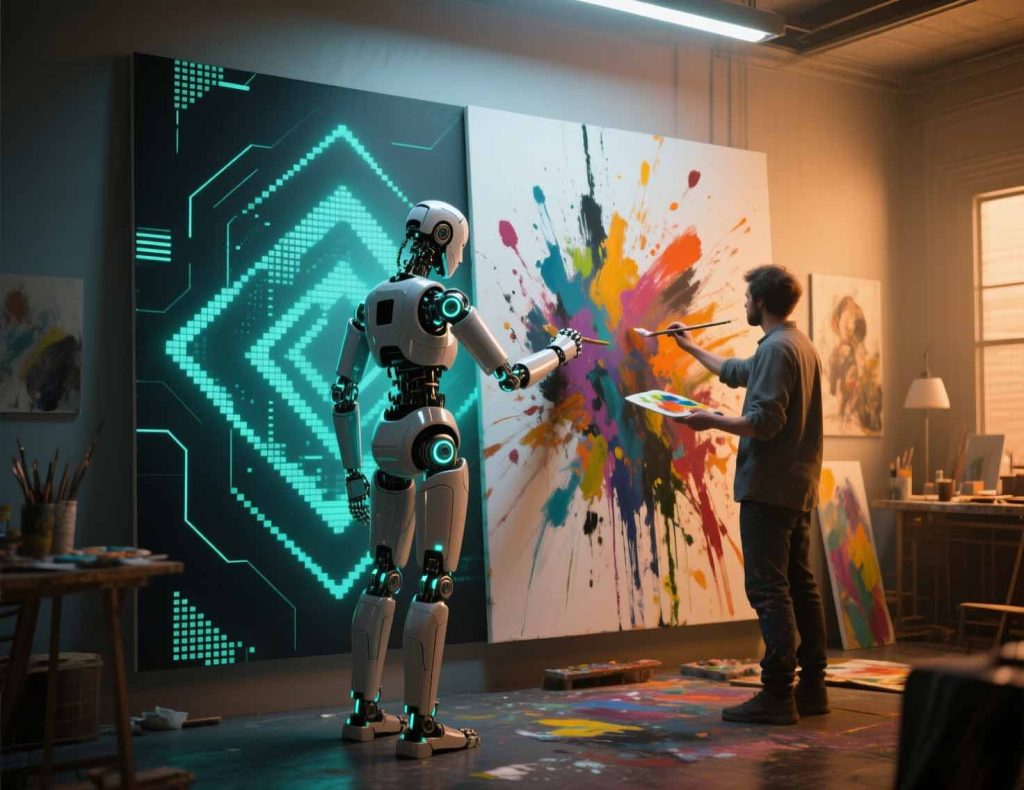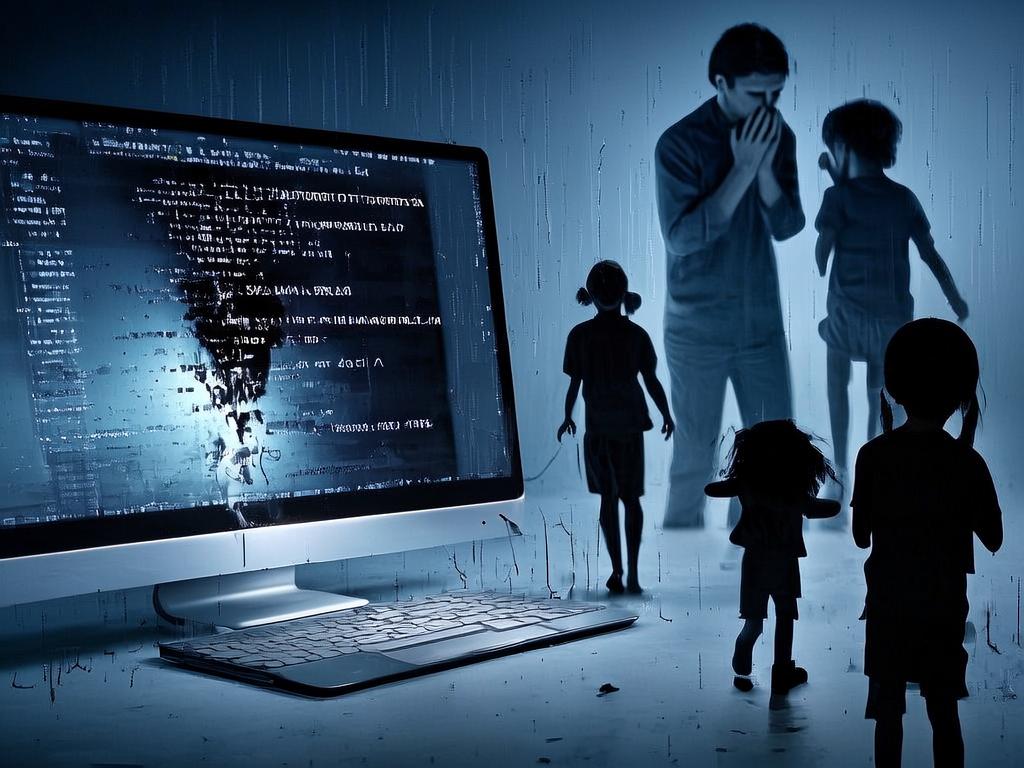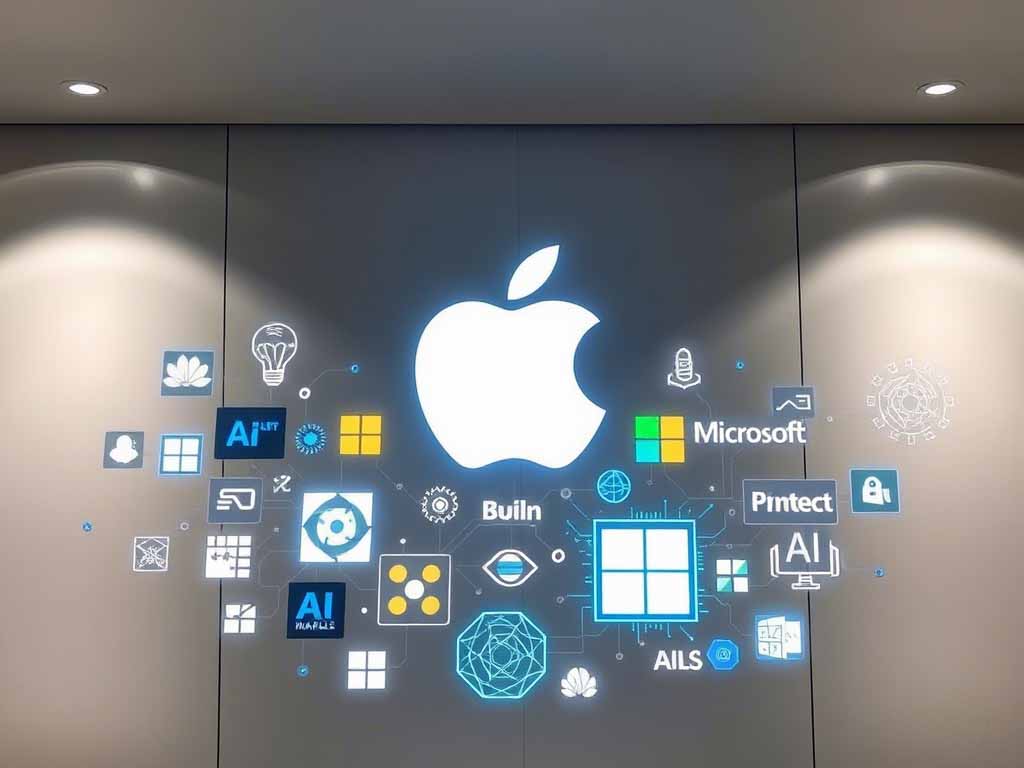A couple years back, an AI-generated portrait called Edmond de Belamy sold at Christie’s for $432,500. Yep, almost half a million for something painted by… well, not really a painter. A machine spat it out after chewing through thousands of real artworks. Some folks clapped, some scoffed, some shouted “this isn’t art!”
But that sale kicked open a question we still can’t quite answer: when AI creates a painting, is it really art? And who gets to decide what “creativity” means — us or the algorithms?
Art Is More Than Paint on Canvas
Let’s step back. What makes a painting art in the first place?
- It’s not just the brushstrokes.
- It’s the story behind them.
- The messy human life that poured into the work.
- The flaws, the doubts, the midnight crisis where the artist nearly gave up.
When Van Gogh painted Starry Night, it wasn’t because a dataset told him swirling skies sell well. It was because he was haunted, restless, and desperate to make sense of the storm in his head. That pain — that humanity — is what we respond to.
AI, on the other hand? It doesn’t have childhood trauma, or joy, or heartbreak. It has training data.
The Rise of AI Painters
Still, we can’t ignore the fact that AI art is exploding. Tools like DALL·E, MidJourney, and Stable Diffusion are spitting out wild images in seconds. Surreal dreamscapes. Portraits of people who don’t exist. Hyper-detailed scenes that look like Renaissance paintings after a double espresso.
And people are buying them. Showcasing them. Even competing with them. There are online galleries now where half the submissions are AI-made.
So here we are: humans who bleed for art, and machines that remix pixels into beauty.
Is It “Creativity” or Just Remixing?
Critics argue AI doesn’t actually create; it just recombines what it’s already seen. And to be fair, humans do a lot of remixing too. Shakespeare stole plots. Picasso once said, “Good artists copy, great artists steal.”
But here’s the catch: when humans borrow, they transform with lived experience. A breakup song isn’t just notes; it’s heartbreak. An AI breakup song? Well, it’s just… statistically accurate sadness.
Machines don’t feel the weight of inspiration. They simulate it. And maybe that’s the line in the sand.
Real-World Flashpoint: The Colorado Fair
Quick story: in 2022, an AI-generated piece actually won first place in a fine arts competition at the Colorado State Fair. The artist, Jason Allen, typed in prompts, refined outputs, and printed the final piece. Judges crowned it the winner.
The backlash was instant. Other artists felt cheated. “This isn’t fair,” they said. “How can a prompt beat years of skill, practice, and human sweat?”
Jason’s defense? “I used a tool. Just like Photoshop. Just like a camera.”
And honestly, that’s where the debate gets messy. Is AI just another paintbrush — or is it a substitute for the painter altogether?
Where AI Art Shines
Let’s give AI credit where it’s due:
- Speed & accessibility: Anyone can create stunning visuals in seconds, even if they can’t draw a stick figure.
- New forms of creativity: AI lets us imagine impossible worlds, surreal mashups, visuals straight from dreams.
- Collaboration: Many artists use AI as a starting point, not a final product. It’s a spark, a brainstorming buddy, not the fire itself.
Used this way, AI art feels less like cheating and more like expanding what creativity can be.
Where It Falls Flat
But here’s where AI still feels hollow:
- No intentionality. AI doesn’t decide why it paints; it just paints.
- No story. There’s no messy human journey behind the canvas.
- Bias baked in. If the training data is limited, the outputs are too. That’s why AI often defaults to Eurocentric beauty standards in “portrait art.”
Without soul, AI art risks becoming wallpaper: technically impressive, emotionally forgettable.
Who Gets to Define Creativity?
At the end of the day, maybe the question isn’t whether AI is creative — it’s whether we’re okay with calling it creativity.
For some, creativity means originality, risk, vulnerability. For others, it’s simply producing something new and interesting, no matter the process.
If art is about connection, though — that spark between the creator and the audience — then maybe machines can’t ever truly cross that gap. They can produce. But can they connect?
My Take
I think AI art is dazzling and terrifying all at once. It democratizes creativity, gives everyone a brush. But it also risks cheapening the word “art” if we forget the messy, human side of it.
When I stand in front of a painting, I don’t just want to see colors. I want to feel the heartbeat behind them. The late nights. The failures. The joy. The ache.
And until an algorithm can feel those things — truly feel them — it won’t define creativity for me.
Closing Thought
So who defines creativity? We do. Humans. With our biases, our tears, our laughter, our chaos. AI can join the gallery, sure. It can hang on the wall. But it can’t replace the messy, imperfect soul that makes art worth making.
And maybe that’s the beauty of this strange new art world: it forces us to remember what’s really at stake.
If you liked this take, check out my earlier post on AI Storytelling: Can Technology Create Stories Like Shakespeare? for another dive into how machines are testing the limits of human creativity.



